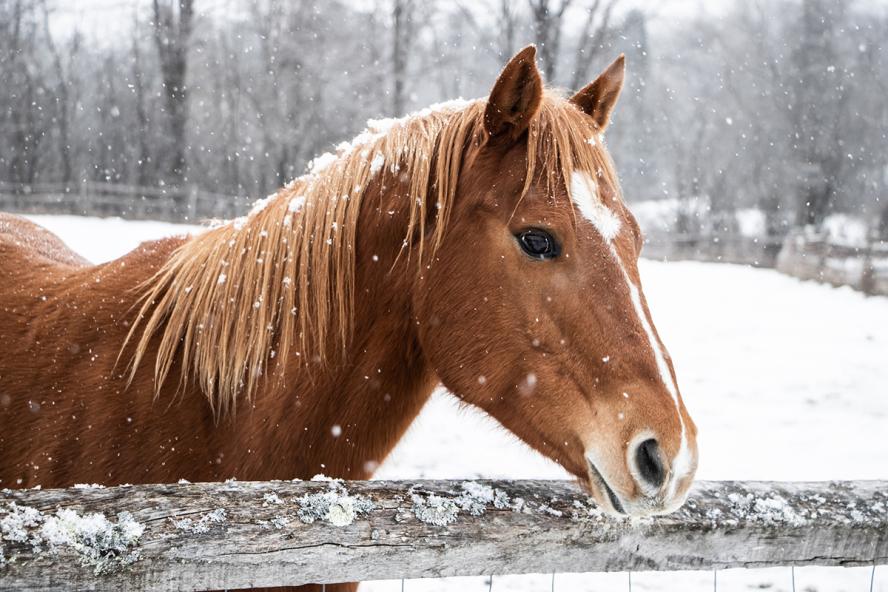-
About
- Leadership & Faculty
- News & Events
-
Academics
- Graduate
- Advanced Clinical Training
- Continuing Education
- Academic Departments
- Academic Offices
- Simulation Experiences
-
Student Life
-
Research
-
Hospitals & Clinics
- Emergency Care
- Hospital Services
-
Community Outreach
- Volunteer
Winter Care for Horses
Ask the expert

The frigid temperatures of winter provide some challenges to ensure that horses stay hydrated, fed, mobile, and warm. Here are some tips to handle our equine friends during these cold months with limited daylight.
Access to Water
Ensuring uninterrupted access to water is a priority. An average-sized adult horse will drink about 30 liters of water daily and these requirements can increase in the winter. If water buckets freeze, this limits a horse’s ability to drink the water it needs and increases its risk to develop certain types of colic. There are also some horses who have an aversion to very cold water and refuse to drink it. The use of a bucket-warmer could help moderate water temperature and prevent freezing.
Shoes
Winter shoeing typically involves two modifications to a horse’s regular shoes. First is the addition of material to increase traction on icy ground. Two most common options are either the addition of borium or classical studs to the ground surface of the shoe. The other winter issue is the accumulation of snow within the shoe and concave surface of the sole which becomes a slippery ice ball and can lead to falls. Therefore, the other addition to consider are “snowball” pads. As with adding traction, there are a variety of styles, but each aims to reduce the risk of ice accumulating within the shoe.
Blankets
In New England, many horses require winter wear and a wide variety of blankets are available to help them stay warm. Not every blanket is right for every day. If horses get cold, it can lead to a variety of problems including decreased eating and drinking behaviors. However, it is also possible to overdress our horses, causing them to sweat under the blanket. Considerable temperature swings from warm to cold can result in a horse that is wet and wearing a damp blanket in the cold which will no longer provide effective warmth or insulation.
Feeding
During winter, a change in feeding routine is often necessary, when less daylight can result in less activity and a potential decrease in the total daily energy requirements. If the amount fed is not adjusted, weight gain is possible. On the other hand, resting energy requirements will increase when the weather is cold, especially for older horses and those with finer coats. Appropriate blanketing can help prevent this issue.
Housing
Horses allowed to acclimate to New England’s cold weather can often over winter with just a run in the shed and occasional blanketing. In most management situations horses are kept in barns, and although the temptation is to seal up the barn tightly in the winter, this can lead to poor air quality. Barns inherently are at risk for increased levels of moisture which can facilitate growth of mold, increased ammonia from urine soaked bedding, and dust from handling hay, each of which contribute to poor air quality. Some baseline level of ventilation should always be maintained, and just like in the summer, as long as the pasture conditions are safe, turnout should still be provided when possible.
Thomas Jenei, V02, serves as director of Cummings School of Veterinary Medicine’s Hospital for Large Animals and is a clinical associate professor in the Department of Clinical Sciences.